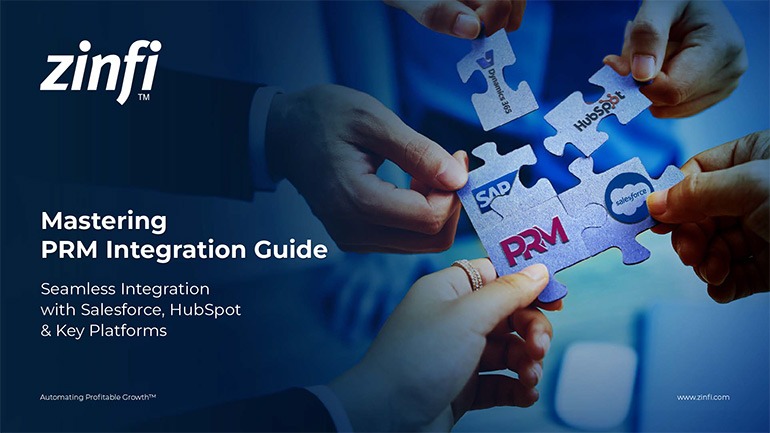Best Practices Articles

What is “Market With” in Partner Marketing?
As businesses seek innovative ways to expand their reach, increase brand credibility, and maximize marketing efficiency, partner marketing has become a powerful strategy. One of the most effective approaches within partner marketing is "market with."
So, what does "market with" mean in partner marketing?
"Market with" refers to the practice of actively collaborating with another company to promote and sell a product or service. This strategy allows businesses to leverage each other’s marketing channels, customer bases, and brand reputation to achieve common goals. Instead of marketing to or through another business, companies market with their partners in a joint effort to engage audiences and enhance brand awareness.
This article explores the key elements, benefits, and best practices of "market with" in partner marketing, along with industry-specific examples in automotive manufacturing, consumer electronics, energy production, financial services, food and beverage, healthcare services, information technology, pharmaceutical development, retail, and telecommunications.
Key Elements of "Market With" in Partner Marketing
- Shared Messaging: Creating a Unified Brand Voice. For a partnership to be successful, both companies must ensure their marketing messages, branding, and customer experience align.
- Consistent Brand Identity: Ensure messaging remains cohesive across all channels.
- Clear Value Proposition: Highlight the unique benefits customers receive from engaging with both brands.
- Unified Marketing Materials: Jointly create brochures, social media content, and ad campaigns.
Example: A financial software provider partners with a cybersecurity company, ensuring that all messaging reflects a shared commitment to secure financial transactions.
- Cross-Promotion: Expanding Market Reach. Cross-promotion enables partners to market each other’s products or services across different channels.
- Website Features: Partners showcase each other’s offerings on their websites.
- Social Media Collaborations: Both companies promote each other’s campaigns.
- Email Newsletters: Partner promotions are included in email marketing.
Example: A fitness app partners with a nutrition supplement brand, promoting each other’s content through blog posts and email marketing.
- Co-Branded Campaigns: Strengthening Brand Trust. Co-branded campaigns help businesses leverage their combined credibility to create stronger, more impactful marketing efforts.
- Co-Branded Content: E-books, guides, and whitepapers featuring both brands.
- Webinars & Live Events: Jointly hosted educational sessions or product launches.
- Advertising Campaigns: Digital ads and influencer partnerships featuring both brands.
Example: A travel agency and an airline co-market summer vacation packages, offering bundled deals for travelers.
- Referral Programs: Driving Customer Growth. Referral partnerships enable businesses to refer customers to each other, increasing customer loyalty and sales.
- Affiliate Partnerships: One brand earns a commission for driving sales to the other.
- Exclusive Bundles: Customers receive special discounts when purchasing from both brands.
- Incentivized Referrals: Existing customers are rewarded for referring a partner brand.
Example: A CRM software provider partners with a customer support chatbot company offering discounts for bundled subscriptions.
Benefits of "Market With" in Partner Marketing
- Increased Brand Exposure – Reach new customer segments through a partner’s audience.
- Cost-Effective Marketing – Share marketing costs for content creation, ads, and events.
- Higher Conversion Rates – Customers trust recommendations from familiar brands.
- Enhanced Customer Experience – Bundled offerings provide greater value.
- Stronger Market Positioning – Partnerships elevate brand authority and reputation.
Industry-Specific Examples of "Market With" in Action
- Automotive Manufacturing
Example: A car manufacturer partners with a tire company for a joint marketing campaign promoting road safety. Their ads feature the latest car models alongside premium tires, emphasizing performance and reliability.
- Consumer Electronics
Example: A smartphone brand collaborates with a wireless earbud manufacturer to promote an integrated experience. They co-market a limited-time bundle where customers purchasing a new phone receive a discount on wireless earbuds.
- Energy Production
Example: A solar panel manufacturer partners with an electric vehicle (EV) charging station provider to offer eco-friendly energy solutions. Their joint campaigns highlight how renewable energy can power electric vehicles efficiently.

- Financial Services
Example: A credit card company partners with an airline loyalty program to offer exclusive travel rewards. Customers earn bonus miles when they use their co-branded credit card for everyday purchases.
- Food and Beverage
Example: A coffee brand teams up with a pastry chain to promote a "breakfast combo deal." Their co-branded social media campaign highlights the perfect morning pairing of premium coffee and fresh pastries.
- Healthcare Services
Example: A telemedicine platform partners with a mental health counseling app, offering a holistic approach to healthcare. Their shared messaging focuses on physical and mental well-being, providing patients with a complete care solution.
- Information Technology
Example: A cloud storage company partners with a cybersecurity software provider to ensure data security for businesses. Their joint whitepaper educates companies on best practices for secure cloud storage.
- Pharmaceutical Development
Example: A pharmaceutical company collaborates with a health insurance provider to educate consumers about medication affordability. Their co-branded email campaigns offer insights into prescription coverage and discount programs.
- Retail Industry
Example: A fashion retailer partners with a shoe brand to create a co-branded pop-up store experience. Customers receive discounts when purchasing outfits and footwear together, promoting a seamless shopping experience.
- Telecommunications
Example: A mobile network provider teams up with a streaming service to offer exclusive subscription deals. Customers who sign up for a mobile plan receive free streaming for six months, enhancing customer loyalty.
Best Practices for Implementing a "Market With" Strategy
- Choose the Right Partner
- Align with brands that complement, not compete, with your offering.
- Ensure brand values and target audiences match.
- Set Clear Goals and Expectations
- Define success metrics such as engagement, conversions, and ROI.
- Establish shared responsibilities and communication channels.
- Develop a Co-Branded Marketing Plan
- Create a detailed strategy outlining content creation, promotion schedules, and budget allocations.
- Track Performance & Optimize
- Monitor key metrics to assess campaign effectiveness.
- Adapt strategies based on customer feedback and engagement trends.
Conclusion
"Market with" in partner marketing is a powerful way for businesses across industries to expand their reach, enhance brand trust, and drive sales. By implementing shared messaging, cross-promotion, co-branded campaigns, and referral programs, companies can create mutually beneficial marketing strategies that maximize impact. Whether you're in automotive, tech, finance, retail, or healthcare, adopting a "market with" approach can unlock new growth opportunities and strengthen customer relationships.
Are you ready to leverage partner marketing for your business? Start collaborating today!
Best Practices Guidebook
 How to Start and Scale Partner Ecosystems Best Practices
How to Start and Scale Partner Ecosystems Best PracticesDownload Guide
 The Evolution of PartnerOps: Past, Present & Future Best Practices
The Evolution of PartnerOps: Past, Present & Future Best PracticesDownload Guide
 Mastering Channel Sales: Strategies, Best Practices, and Growth Tactics for 2025
Mastering Channel Sales: Strategies, Best Practices, and Growth Tactics for 2025Download Guide
 Winning with Partner Advisory Councils: Best Practices for Partner Engagement & Growth
Winning with Partner Advisory Councils: Best Practices for Partner Engagement & GrowthDownload Guide
 The Future of Partner Ecosystems Best Practices
The Future of Partner Ecosystems Best PracticesDownload Guide
 The AI Revolution: How Technology and Talent are Shaping the Future
The AI Revolution: How Technology and Talent are Shaping the FutureDownload Guide
 Top 105 Partner Management Metrics that Matter Best Practices
Top 105 Partner Management Metrics that Matter Best PracticesDownload Guide
 Mastering PRM Integration Best Practices
Mastering PRM Integration Best PracticesDownload Guide
 Building a Sales Partner Portal with Salesforce Best Practices
Building a Sales Partner Portal with Salesforce Best PracticesDownload Guide
 Building and Managing Partner Ecosystems Best Practices
Building and Managing Partner Ecosystems Best PracticesDownload Guide
 Mastering Co-Marketing and Co-Selling Best Practices
Mastering Co-Marketing and Co-Selling Best PracticesDownload Guide
 Transforming Partner Ecosystems Best Practices
Transforming Partner Ecosystems Best PracticesDownload Guide
 Mastering Partner Ecosystems Best Practices
Mastering Partner Ecosystems Best PracticesDownload Guide
 Mastering Partner Onboarding Best Practices
Mastering Partner Onboarding Best PracticesDownload Guide
 Partner Ecosystem Management Best Practices
Partner Ecosystem Management Best PracticesDownload Guide
 B2B Marketing in the Age of Intelligence Best Practices
B2B Marketing in the Age of Intelligence Best PracticesDownload Guide
 Multi-Partner Co-Selling Best Practices
Multi-Partner Co-Selling Best PracticesDownload Guide
 A Guide to Enhance Channel Sales Efficiency
A Guide to Enhance Channel Sales EfficiencyDownload Guide







